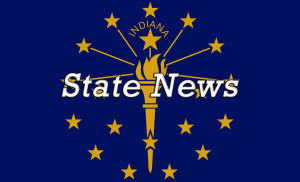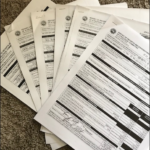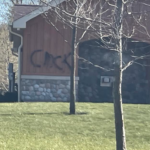 Seven regions across the state have submitted formal applications for the Indiana Regional Cities Initiative (HB 1403), which will be eligible for review by the Strategic Review Committee for state matching funds. Together, these plans total more than $3.78 billion in investments for more than 400 cultural and livability projects in Indiana.
Seven regions across the state have submitted formal applications for the Indiana Regional Cities Initiative (HB 1403), which will be eligible for review by the Strategic Review Committee for state matching funds. Together, these plans total more than $3.78 billion in investments for more than 400 cultural and livability projects in Indiana.
“I am truly inspired by the collaboration and action we have witnessed in our Indiana regions during this process,” said Governor Mike Pence. “This month, we achieved an historic milestone with more Hoosiers working today than at any time in our state’s history, with more than 120,000 jobs created since January 2013. With these tremendous visions for the future of our communities, I am confident that Indiana’s dedication and commitment to quality of place initiatives will establish our regions as global destinations, attracting top businesses and top talent to fill the jobs we continue to create in the Hoosier State.”
Leadership from the Indiana Economic Development Corporation (IEDC) and the Strategic Review Committee recently traveled across the state to meet with local and regional leaders and learn about their visions for the future. The regions that submitted Regional Cities Initiative applications are:
- Central: The central Indiana region evaluates economic challenges it faces, such as population growth, compared to peer metros across the country like Charlotte, Nashville and Denver. The region’s priority projects include a 35-mile Bus Rapid Transit (BRT) line dubbed the Red Line, a 60-acre tech and innovation district, and enhanced trails and pathways to advance the region’s quality of life appeal. Together, these projects will total more than $597 million in investments. [View application]
- East Central: The east central ADVANCE region’s vision is centered on harnessing existing momentum and energy to reinvent the region’s economy by focusing on a new generation of entrepreneurs, institutions and communities as well as recreational and cultural areas. Plans, which total more than $147.9 million in investment, include continued revitalization of Muncie’s downtown area and development along the White River, as well as New Castle’s up-and-coming arts district that builds upon Robert Indiana’s legacy. [View application]
- North Central: The northern Indiana region’s vision is to be recognized for its world-class higher education and community partnerships, superior access and connectivity, and high-performing communities. The region’s quality of place initiatives, which total $731.5 million in investment, include revitalization of the former Studebaker Plant in South Bend, investment in Wellfield Gardens in Elkhart and continued collaborative initiatives with the University of Notre Dame. [View application]
- Northeast: This Road to One Million vision aims to grow the northeast region’s population from 789,015 to 1,000,000 residents by retaining and attracting a young, more educated workforce. The region’s proposal includes 38 projects to be implemented in the next two years, including development along the St. Mary’s River in Fort Wayne, revitalization of the former Clyde Theater and a new 45,000-square-foot Food Innovation Center in Bluffton. The proposal totals more than $842 million in regional investments. [View application]
- Northwest: The northwest region focuses on attracting talent and new business with a focus on connectivity as the region looks to grow and build upon its industrial past. The region plans to invest more than $509.4 million with projects such as Indiana Dunes State Park facility revitalization and significant improvements to the South Shore Line to improve access and convenience while capitalizing on Chicago’s commuting population. [View application]
- Southwest: The southwest region established a vision of “Great Life, Great Community, Great Environment, Great People,” with the goal of growing its population by more than 70,000 people by 2025 by focusing on repopulating urban centers, developing partnerships with local universities and reinvigorating historic destination. Plans, which total $926.3 million in investments, include a Science Center at the Signature School, residential development in Evansville’s city center and gateway projects like the Warrick Country Wellness Trail. [View application]
- West Central: The Wabash River Region is comprised of collaborative, diverse partners who are working together to shape a region of prosperous communities, quality talent from educational institutions, thriving industry and small business, and infrastructure to support growth. The region’s investment plans total approximately $34 million and include renovations of the historic New Moon Theatre in Vincennes as well as transformation of the 180,000-square-foot ICON building along the Wabash in Vigo County to include working space, amenities and housing for entrepreneurs. [View application]
The Strategic Review Committee will hold several meetings over the coming months to determine the review method and to evaluate submitted applications before making formal recommendations for funding to the IEDC Board of Directors during the fourth quarter.
The committee, chaired by IEDC Board Member John Thompson of Thompson Distribution Company includes: Keira Amstutz, Indiana Humanities; Kathy Davis, Davis Design Group; Larry Gigerich, Ginovus; Steve Goldsmith, Harvard University; Gary Hobbs, BWi; Ryan Kitchell, IU Health; Chris LaMothe, Elevate Ventures; Mark Maasel, Indiana Energy Association; Mitch Roob, KERAMIDA and Paul Wheatley, The Wheatley Group.
The Indiana Regional Cities Initiative sets a framework for neighboring communities across the state to work together to develop vision and action plans for quality of place initiatives, with plans totaling billions of dollars in joint private and public investment over the next decade. The Indiana Regional Cities Initiative has sparked action across the state as multiple regions have formed steering committees and held public forums with hundreds of civic and business leaders to identify key areas for regional advancement.














